
Tech plays larger role in Jefferson City police operations
[ad_1]
Improving efficiency, protecting the public and protecting officers.
Those are the three criteria Jefferson City Police Chief Eric Wilde said he considers when making decisions about spending department funds on technology. Looking at what they have now, Wilde said they have met those criteria.
“The costs for the technology the department will need to effectively combat crime in the future will continue to rise, but we have to keep making that investment,” Wilde said.
JCPD Sgt. Andy Lenert is in charge of many of the department tech devices, such as remote-controlled drones.
Lenert and the three other members of the department assigned to do drone work have to obtain a remote pilot certificate from the Federal Aviation Administration. This certificate demonstrates they understand the regulations, operating requirements and procedures for safely flying drones. The FAA says drones can fly at or below 400 feet in controlled airspace.
“A big part of that training is we have to show our knowledge about weather,” Lenert said. “It’s a big factor in flying a drone because things like updrafts near buildings can really cause havoc with the vehicle, which could lead to property damage or, God forbid, hurt people.”
Lenert said every two years they have to get recertified by the FAA.
“You never stop learning because the drone industry has changed faster than the federal government can keep up with,” Lenert said. “The technology comes out so fast anymore.”
Lenert said he and his fellow drone operators train as often as possible.
“Operationally, we could use these twice in a week or it could be once in a couple of months,” Lenert said. “It depends on what is going on. I have told our shift commanders that if they feel they could use our help that they should not hesitate to call us at any time and we’ll get out there.”
Lenert said the drones have shown their worth during executions of search warrants and when they’ve dealt with subjects who have barricaded themselves in a home or building.
The Brinc Lemur drone they have is not the biggest drone, but it has many capabilities that allows officers to conduct operations more safely than in the past. The Lemur has two-way communication device which allows an officer to connect to the drone via their cell phone. The drone can then be flown inside or outside the structure and the officer can talk to a person inside and do that from a safe distance. It also has a glass breaker, night vision ability to see in low-light conditions, and can flip over after a crash. These devices are only used by law enforcement agencies or the military.
“We don’t know what a barricaded subject could be doing, so the drone can give us a first look before we have to send people in there,” Lenert said. “If they damage the drone, it’s just a piece of equipment, we just don’t want to see people get hurt.”
The Lemur can be flown into some tight spots, like under a bed, but JCPD also has a bigger drone, the Matrice 200, which can stay in the air for about an hour and fly as far as nine miles. It has a thermal camera which can record video and take still pictures. It has a heat sensor that is capable of detecting tiny differences in temperature. The device collects the infrared radiation from objects in the scene and creates an electronic image based on information about the temperature differences.
Another high-tech piece JCPD is using is called the Throwbot. Lenert said the concept is relatively simple, but it is actually a throwable micro-robot platform that enables an operator to obtain instantaneous video and audio reconnaissance within indoor or outdoor environments.
“You could throw it into an upstairs window and then, like with the drone, we have the capability of remotely controlling it to look around in a building we need to search,” Lenert said. “The microphone allows you to listen to what’s going on inside, but it doesn’t have the communication capability like the drone does.”
The most anticipated new technology for JCPD is body cameras for all officers, as well as Wilde, who said financing the program has always been the big issue for them. But recent actions have helped.
The City Council passed a resolution in May, allowing the city to apply for the grant from the Federal Bureau of Investigation, which, if awarded, would provide up to $180,000. The city expects to hear if it has received the grant by Oct. 1. The rest of the anticipated cost of more than $655,000, which includes 39 in-car cameras and all other related equipment, would be paid out of the quarter-cent public safety tax voters approved last year.
Wilde said the cameras could be in use by the start of next year. He sees the body-camera program as holding police officers and the community accountable.
“We also have so much more in our patrol vehicles that allow us to respond to incidents quicker,” Wilde said. “With the added expense of technology comes the increased efficiency so we’re not just sitting in the department writing reports all day. We can do that in the field, and we don’t have to depend solely on radio communication to find out details about calls we respond to. We see and can refer back to that information at any time due to the computers in the vehicles.”
Although they have to constantly deal with upgrades, like the in-car computers every five years, “It’s worth the cost for the results we get,” he said.
In the accompanying video, JCPD Sgt. Andy Lenert shows off a drone and talks about how it can be used.
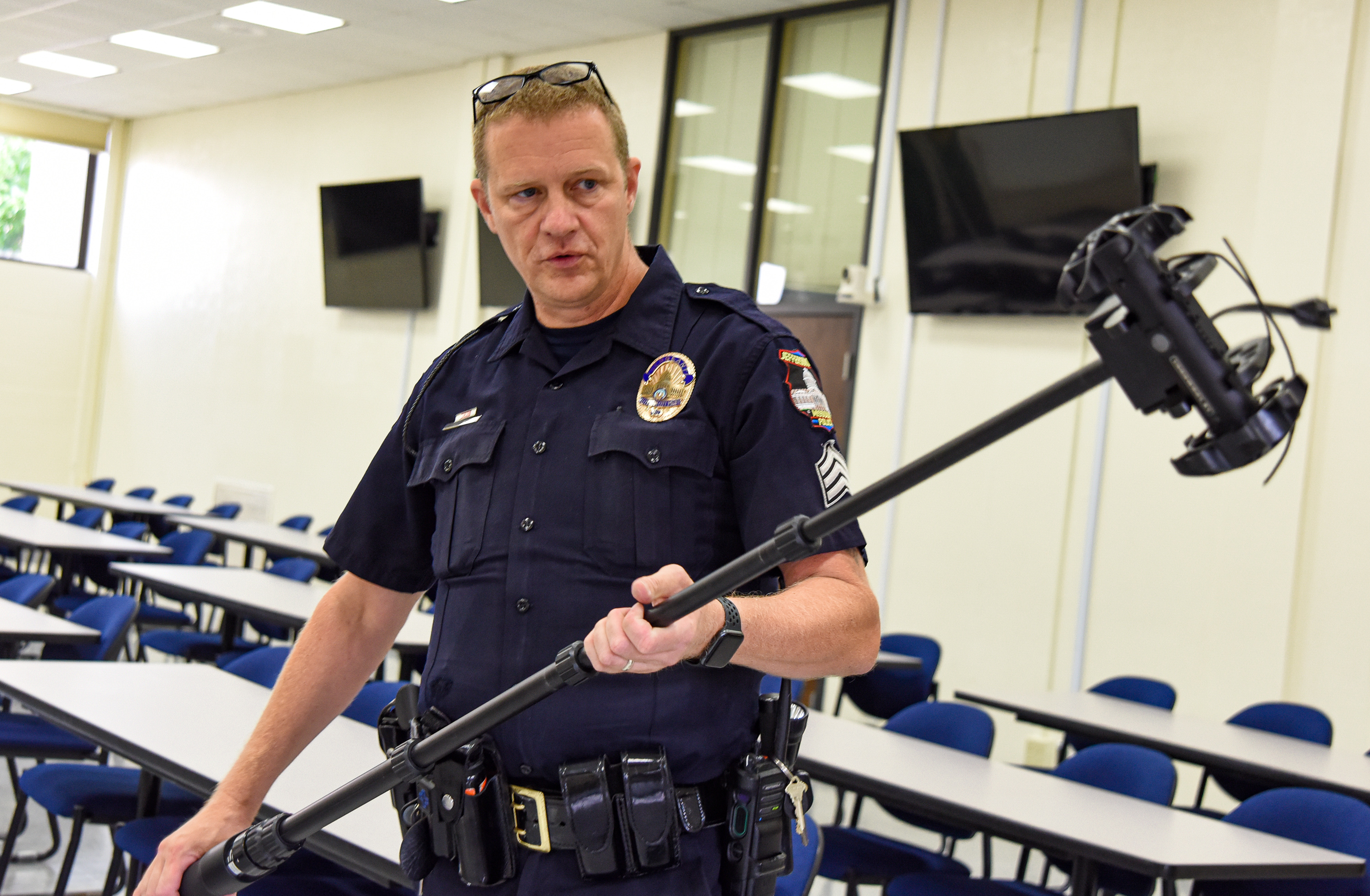 Julie Smith/News Tribune photo: Sgt. Andrew Lenart demonstrates one of the ways that a throwbot can be used. He showed some of the technology that the Jefferson City Police Department can use at different times that will help reduce the risk of injury to an officer(s) and to the public. The drones are equipped with cameras, including a thermal camera, lights, attachments and more.
Julie Smith/News Tribune photo: Sgt. Andrew Lenart demonstrates one of the ways that a throwbot can be used. He showed some of the technology that the Jefferson City Police Department can use at different times that will help reduce the risk of injury to an officer(s) and to the public. The drones are equipped with cameras, including a thermal camera, lights, attachments and more.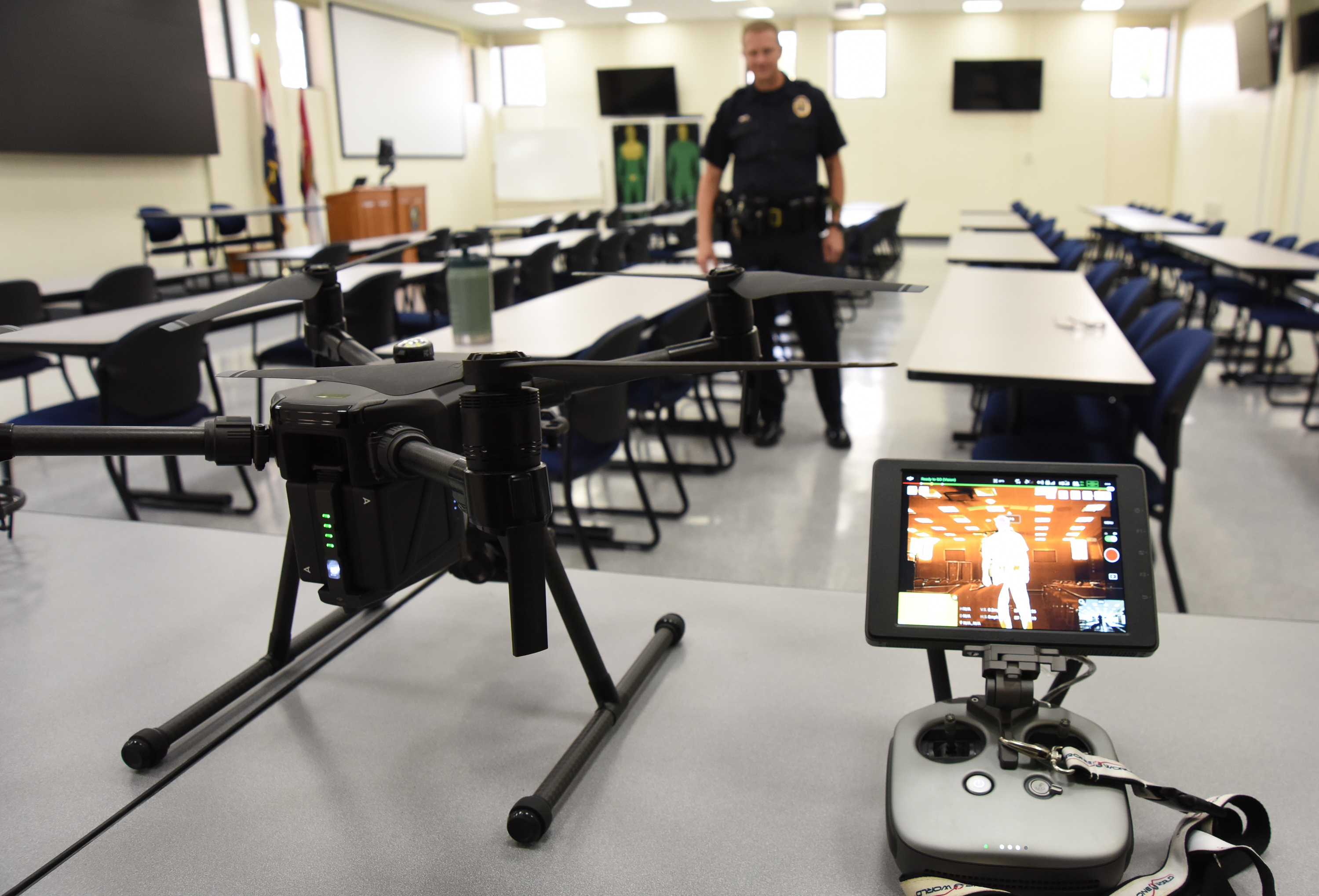 Julie Smith/News Tribune photo: Sgt. Andrew Lenart is seen through a thermal imaging camera as he demonstrates some of the technology that the Jefferson City Police Department has available.
Julie Smith/News Tribune photo: Sgt. Andrew Lenart is seen through a thermal imaging camera as he demonstrates some of the technology that the Jefferson City Police Department has available.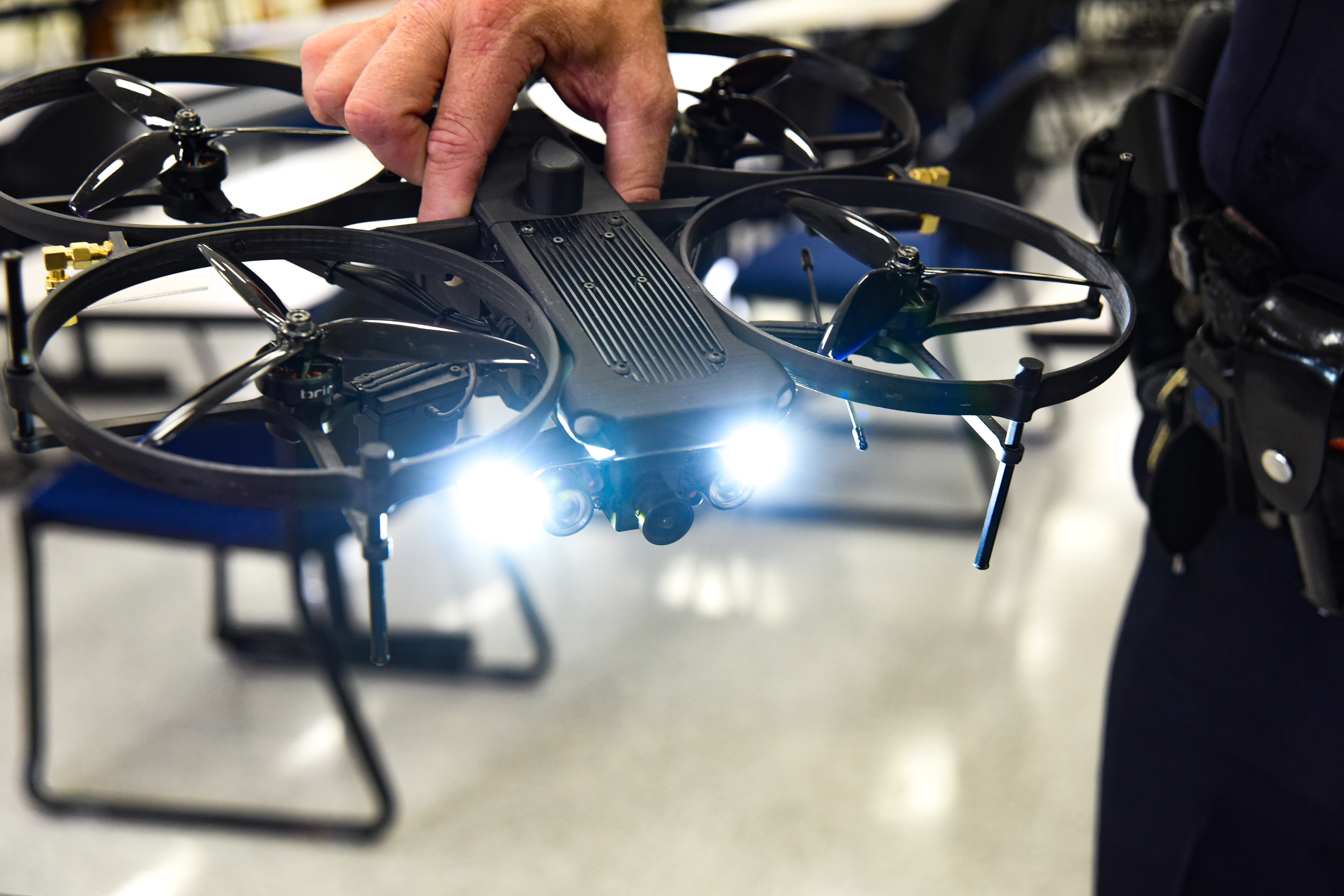 Julie Smith/News Tribune photo: Sgt. Andrew Lenart demonstrates some of the technology that the Jefferson City Police Department can use at different times that will help reduce the risk of injury to an officer(s) and to the public. The drones are equipped with cameras, including a thermal camera, lights, attachments and more.
Julie Smith/News Tribune photo: Sgt. Andrew Lenart demonstrates some of the technology that the Jefferson City Police Department can use at different times that will help reduce the risk of injury to an officer(s) and to the public. The drones are equipped with cameras, including a thermal camera, lights, attachments and more.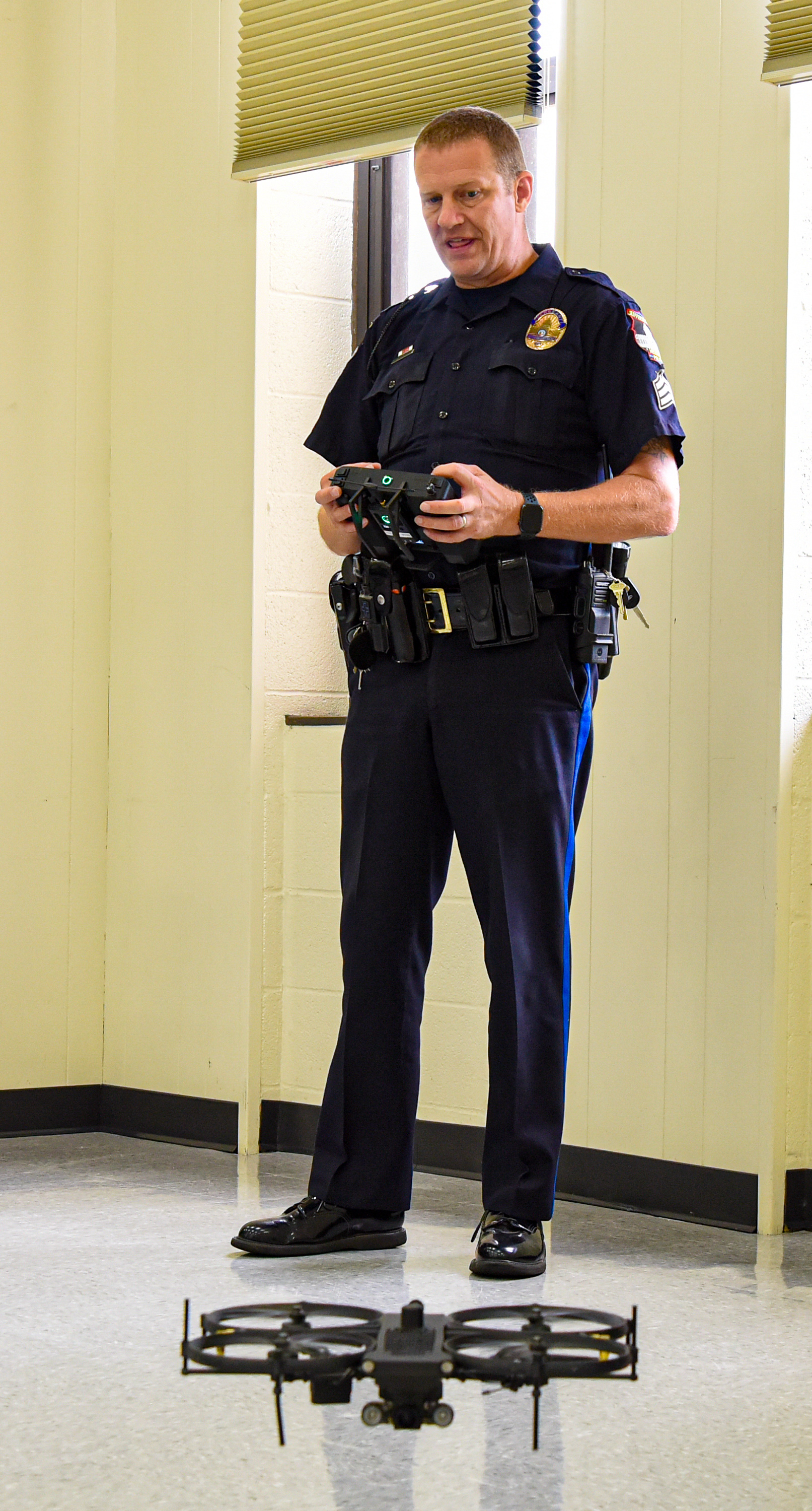 Julie Smith/News Tribune photo Sgt. Andrew Lenart demonstrates some of the technology that the Jefferson City Police Department can use at different times that will help reduce the risk of injury to an officer(s) and to the public. The drones are equipped with cameras, including a thermal camera, lights, attachments and more.
Julie Smith/News Tribune photo Sgt. Andrew Lenart demonstrates some of the technology that the Jefferson City Police Department can use at different times that will help reduce the risk of injury to an officer(s) and to the public. The drones are equipped with cameras, including a thermal camera, lights, attachments and more. Julie Smith/News Tribune Sgt. Andrew Lenart demonstrates some of the technology that the Jefferson City Police Department can use at different times that will help reduce the risk of injury to an officer(s) and to the public. The drones are equipped with cameras, including a thermal camera, lights, attachments and more.
Julie Smith/News Tribune Sgt. Andrew Lenart demonstrates some of the technology that the Jefferson City Police Department can use at different times that will help reduce the risk of injury to an officer(s) and to the public. The drones are equipped with cameras, including a thermal camera, lights, attachments and more.
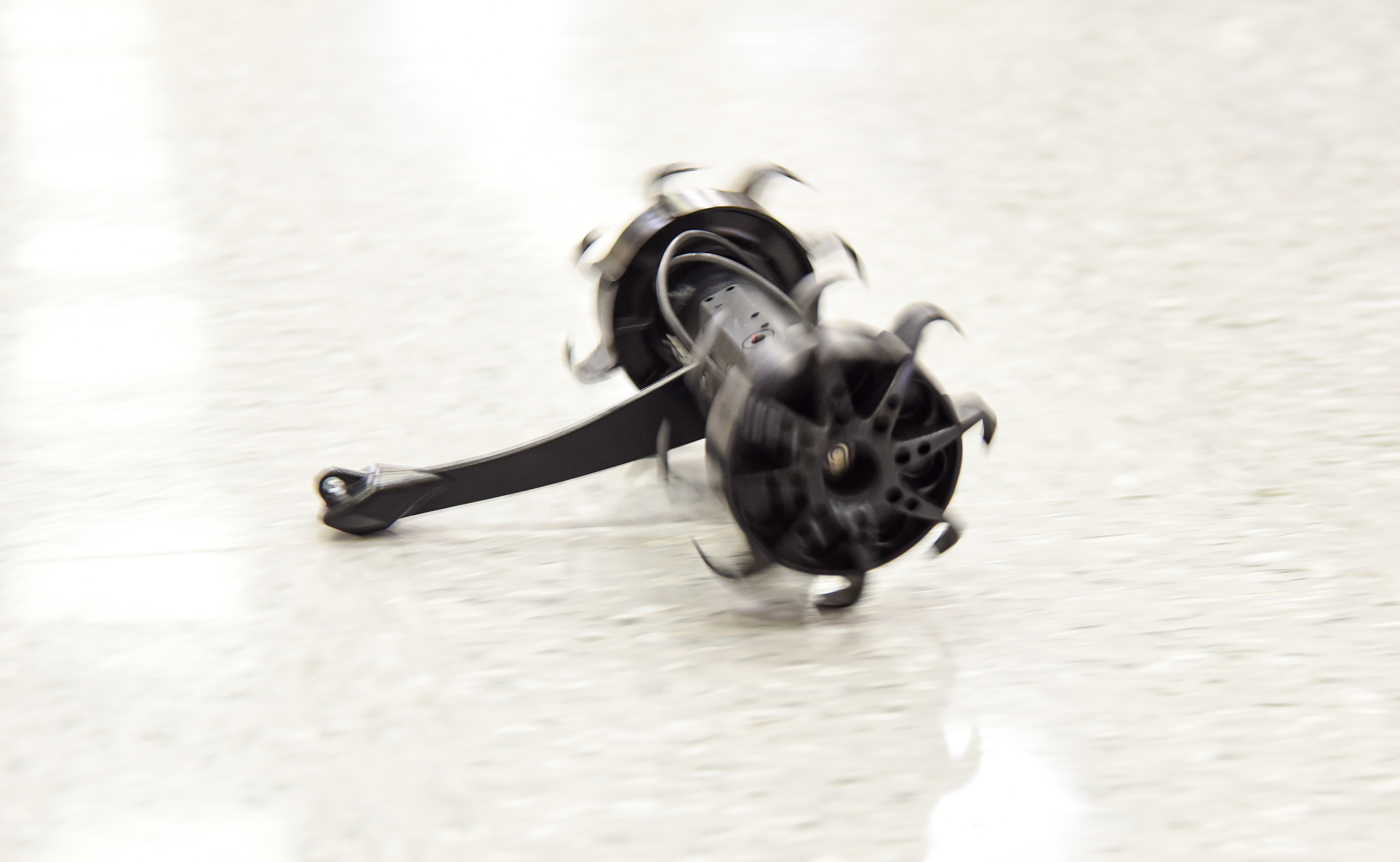 Julie Smith/News Tribune photo: A throwbot rolls across the floor, being controlled by remote by Jefferson City Police Department Sgt. Andrew Lenart. The bot contains a camera and features a rubberized coating that allows it to be tossed across a room or through an open window so that police can see what is happening inside.
Julie Smith/News Tribune photo: A throwbot rolls across the floor, being controlled by remote by Jefferson City Police Department Sgt. Andrew Lenart. The bot contains a camera and features a rubberized coating that allows it to be tossed across a room or through an open window so that police can see what is happening inside.[ad_2]
Source link

